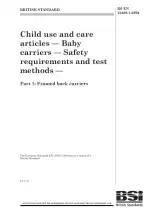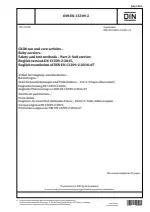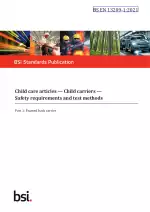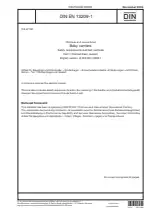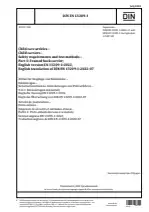Child care and care articles - Baby carriers - Safety requirements and test methods - Part 1: Framed back carrier
Also Known As:
The safety standards and testing procedures for framed back carriers used to transport kids while they are sitting are the main topics of the DIN EN 13209-1 standard. These carriers have a maximum weight capacity of 22 kg and are intended for kids 6 months and older. The carriers are made to be fastened to the caregiver's body, letting them move or stand with their hands free.
The standard specifies regulations pertaining to different factors, ensuring the safety of these carriers. For the carriers' strength and durability, this comprises specifications for the frame and attachment mechanisms during construction and design. It also addresses specifications for things like ergonomics to guarantee that the carrier offers the right support and comfort for both the kid and the caregiver.
The standard also specifies test procedures for determining if these safety standards are being met. These techniques entail putting the carriers through a variety of tests, like load testing, to gauge how well they operate and how well they can support the designated weight restrictions. The tests also assess elements including the carrier's stability, the efficiency of the safety harness, and the robustness of the materials employed.
| Descriptors | Babies, Baby carriers, Baby equipment, Carrier bags, Carry cots, CE marking, Children, Consumer information, Definitions, Design, Dimensions, Fitness for purpose, Infants, Instructions for use, Load factor, Marking, Materials, Pack frames, Packages, Properties, Safety, Safety engineering, Safety requirements, Specification (approval), Stress, Testing |
| ICS Codes | 97.190 - Equipment for children |
| Language(s) | English + German |
| File Size | 1.9 MB |


